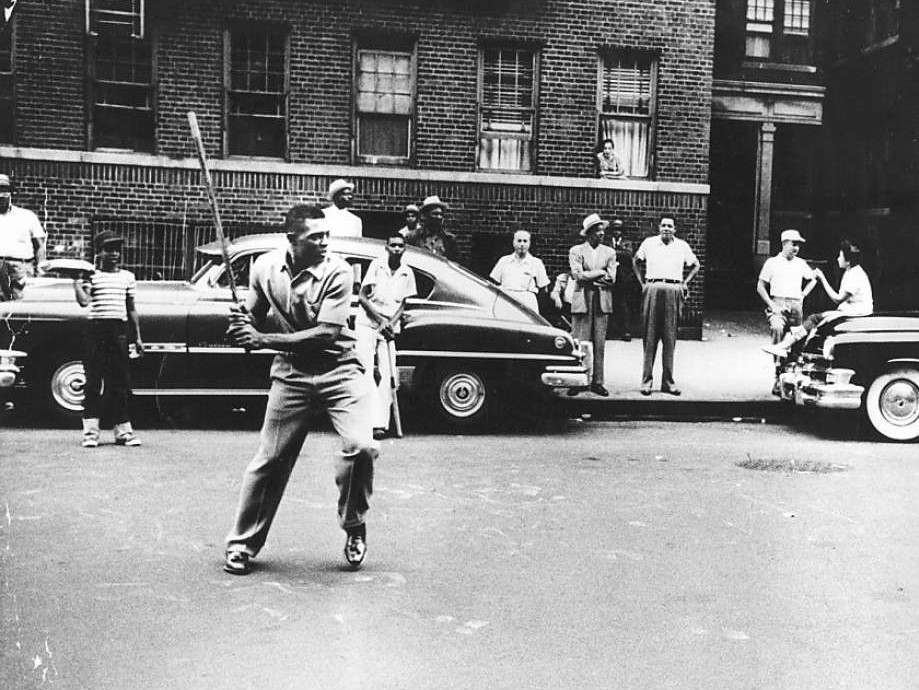Stickball, Death of A Street Culture
Like a modern Bruegel painting depicting kids in playful outdoor scenes, stickball was a familiar picture in America’s urban landscape for most of the 20th century. And like the Dutch painter’s subjects, it all but disappeared.
Youngsters living in cramped apartments in northeast cities like New York, Philadelphia and Boston made the streets their playground in an era when “stranger-danger” wasn’t embedded in parental consciousness.
Hopscotch, handball and tag all had their street variations, which in many cases originated in old Europe and brought over by immigrants. But no pavement recreation was more quintessential American than stickball, a variant of baseball with its own street rules.
Until the late 1950’s, baseball-crazed New York had three professional teams: Yankees, Dodgers, Giants. Football and basketball, while popular in college, were still under the shadow of America’s favorite pastime and didn’t produce the same iconic sports heroes.
For impoverished and lower-middle class teenage slickers, stickball made the most with the least. A broom stick passing off as a bat and a high-bouncing spalding ball were enough to get pick-up games going and also create neighborhood teams.
Manhole covers were used as home plate, fire hydrants and parked cars as bases, buildings as foul lines. There was fast pitch against a wall with a chalked strike zone, slow pitch with a bounce, and the ubiquitous self-tossing fungo.
Tossing and swinging while the ball was still in midair didn’t carry the same street culture machismo as letting it first bounce on the asphalt and then taking a swat.
Urban sluggers who could hit the ball two or three “sewers” down the block became neighborhood legends.
In more confined spaces like back alleys and side streets, singles, doubles and triples were determined by where the ball hit. Landing a spaldeen on a building roof was either a home run or an out, depending on preset agreements.
Rules varied from neighborhood to neighborhood, city to city, but with one common feature- a freewheeling playing spirit and the absence of supervision.
Legendary All-Star Willie Mays (photo above) learned to hit breaking balls on the streets of Harlem during his first two years with the Giants, swinging mop handles between parked cars without coaches or trainers.
Stickball contributed to a vibrant street life, but not everyone relished play time. Building superintendents and cops driving by confiscated balls and broke sticks. For some residents, shattered windows and neighborhood interruptions were too much.
After car traffic started growing in cities, stickball found a home in school yards and open lots. The king of street games still remained popular but would suffer a slow death with shifting cultural patterns and the advent of more recreational options.
The 1980’s ushered in video games and cable TV, resulting in kids spending more of their leisure indoors. Overprotective parents also turned sports into organized and sanitized activities, controlling everything from playdates to transportation.
Branded superstars like Michael Jordan drew interest towards pickup basketball games, while new diversions like skateboarding made different use of the street.
A few dedicated groups like the NY Emperors Stickball League still keep the spirit alive, but stickball as a street culture has disappeared.










